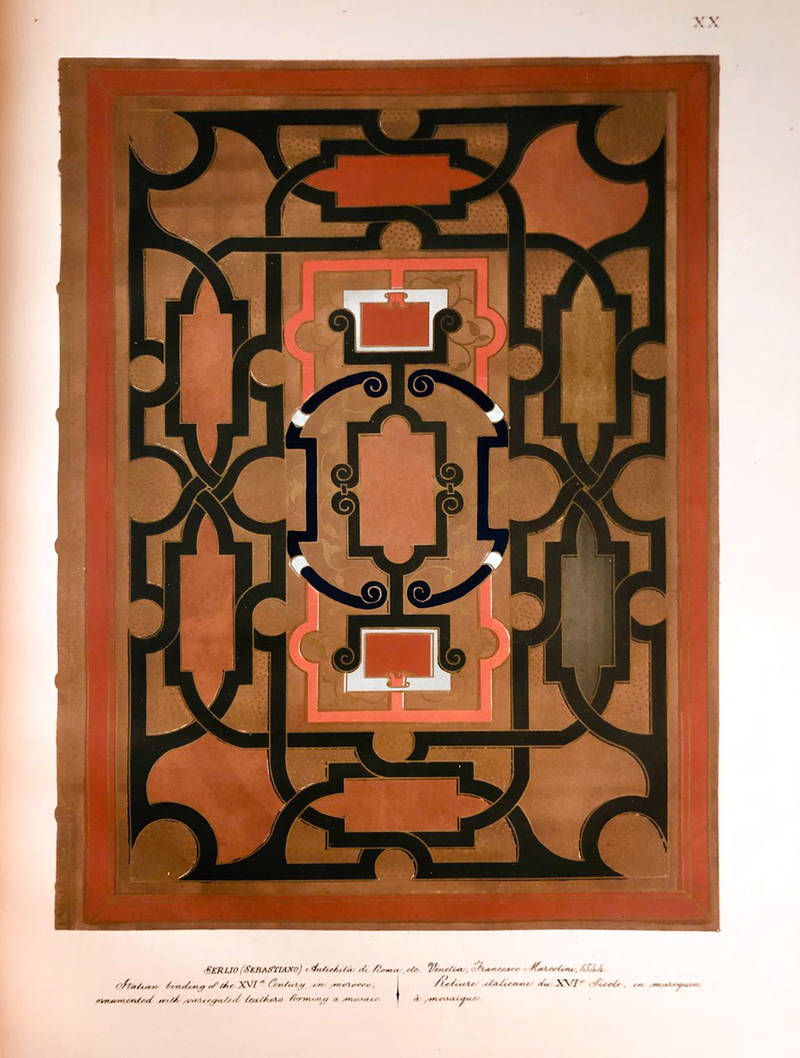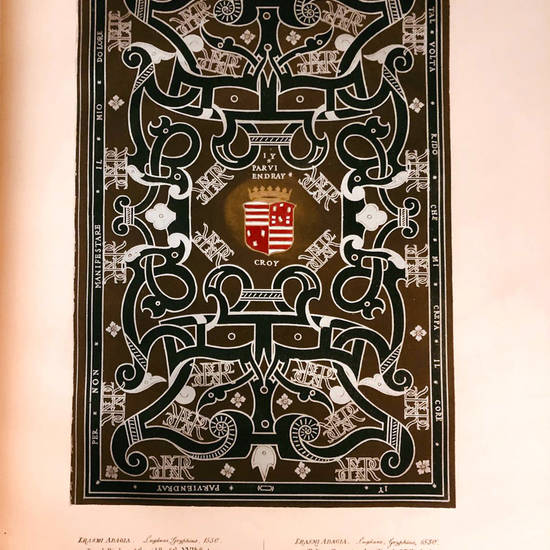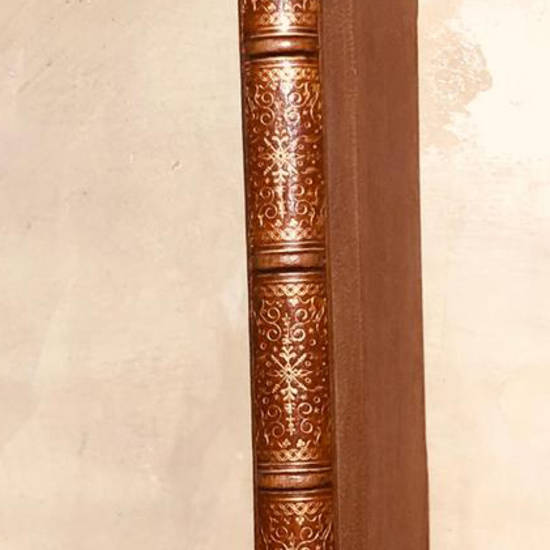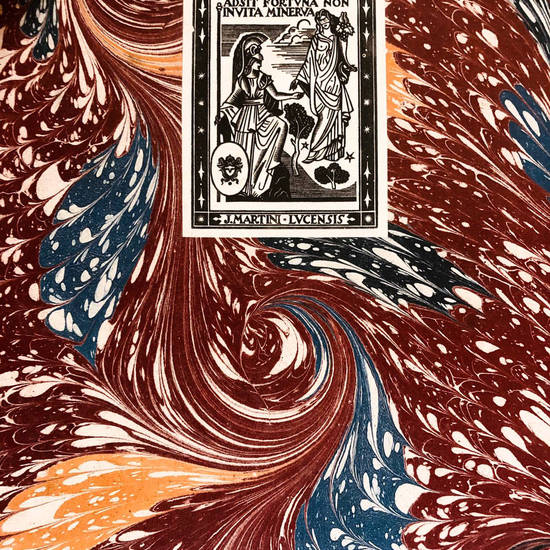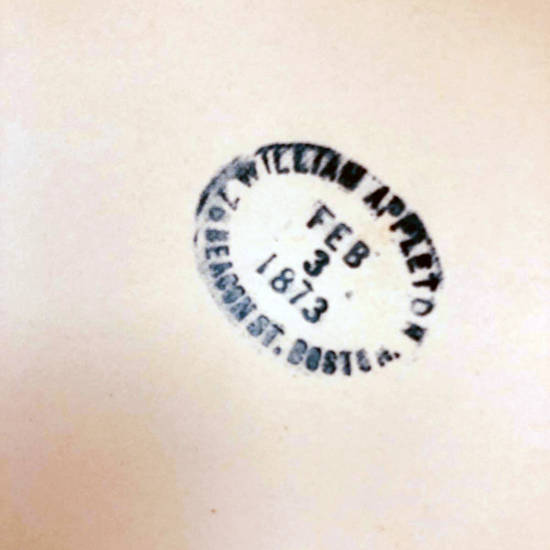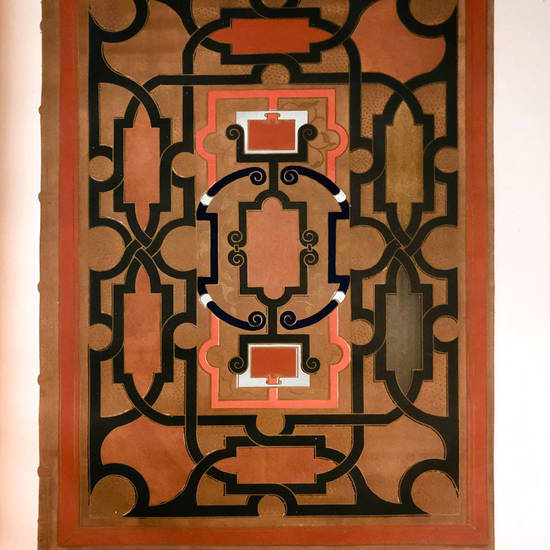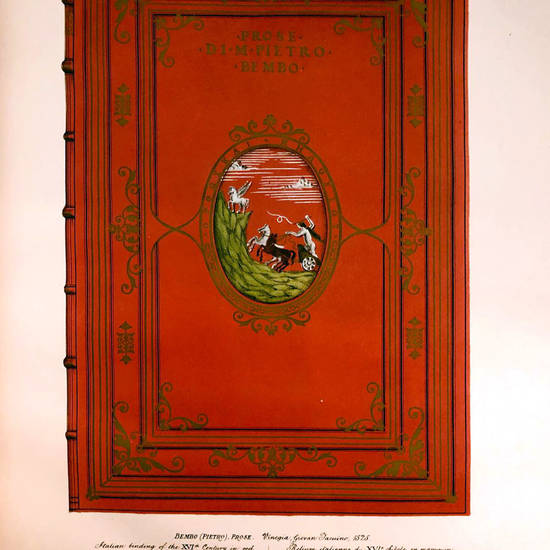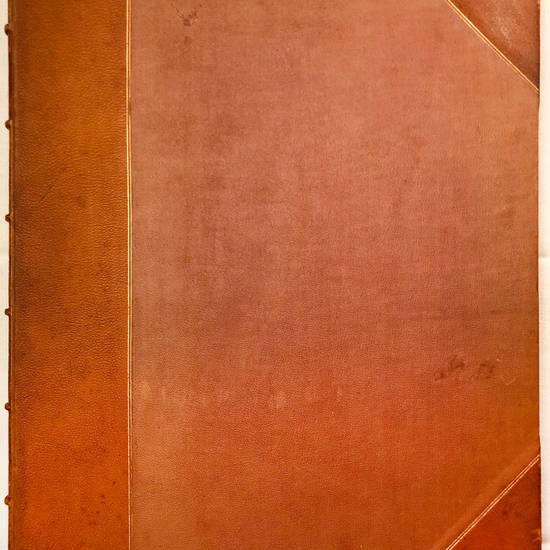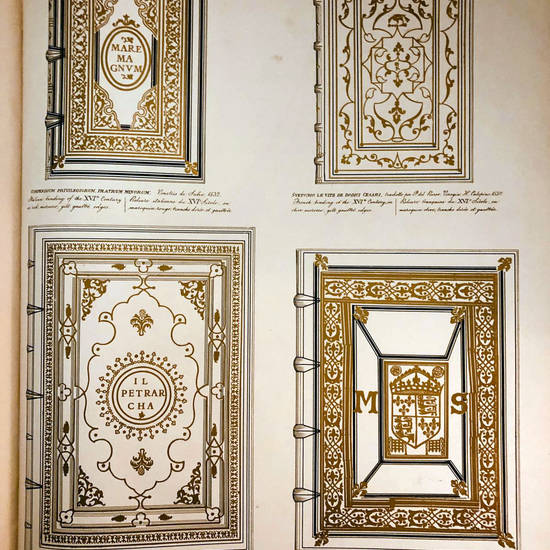GIUSEPPE MARTINI'S COPY
Folio (400x513 mm). 14, [2] pp, 5 leaves of plates (numbered A-E), 60 leaves of plates (numbered I-LX). The plates are very fine chromolithographs and are protected by tissue guards. Text in French. Nicely bound in contemporary half morocco, richly gilt spine with six raised bands, gilt edges, marbled endleaves. In stunning condition.
Provenance: Giuseppe Martini, with his bookplate and a note in his hand probably referring to the acquisition date (2 February 1913). Moreover, on the front flyleaf is the oval stamp (cm. 3x2) of the American millionaire William Appleton (70 Beacon Street, Boston), dated 3 February 1873, which is repeated also on title page and on plates XXI and XLIII.
RARE SECOND EDITION augmented of 5 plated, numbered A-E, as compared to the first edition printed in London by Dulau in 1862. However, there are copies of the first edition, which have a Supplément, dated 1864, containing those additional plates. In 1862 also appeared the auction catalogue in French and English, through which Libri sold the most relevant part of his collection: Catalogue of the reserved and most valuable portion of the Libri Collection, containing [...] ancient manuscripts & printed books [...] several unknown block-books; ancient drawings by the great masters; and including a [...] collection of historical ornamented bindings [...] which will be sold by auction, by Messrs. S. Leigh Sotheby & John Wilkinson [...] on [...] 25th July, 1862.
This is by far the most lavish and important among Libri's catalogues, all very rare. It was printed on very high quality paper and sumptuously bound. The introduction is in some copy bilingual with French and English text in two columns.
Libri was “a scholarly scoundrel who made wholesale thefts from the French libraries to which he had access […] In 1862, Libri published a magnificent folio volume of sixty plates in chromolithography […] It contained 113 reproductions of bindings from Carolingian goldsmith's book covers to Renaissance gold-tooled bindings, all, of course, stolen, with descriptions in English and French, offering for the first time a considerable corpus for study and comparison” (B.H. Breslauer, The Uses of Bookbinding Literature, New York, 1986, pp. 15-16).
OCLC, 1040460688; Schmidt-Kunsemuller, 1339.
[7422]

